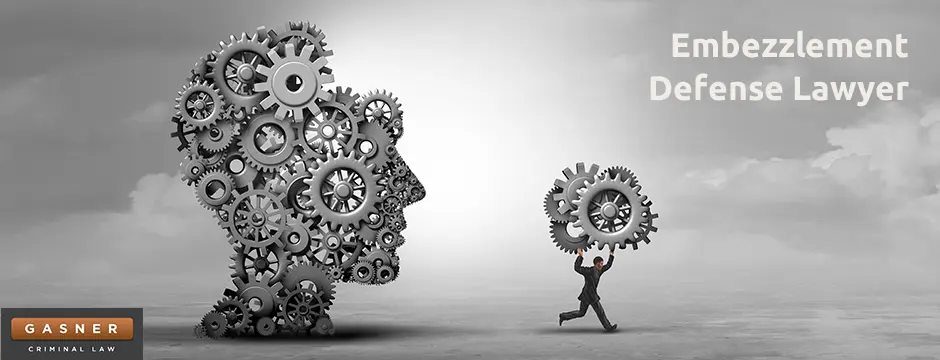Embezzlement Defense
An embezzlement defense lawyer defends clients charged with taking something of value, usually money, from a person, a company, or the government and using it for personal gain. Embezzlement is a serious crime that can carry fines and time in jail. In California, Penal Code 503 PC defines embezzlement as fraudulently appropriating property entrusted to the defendant.
One example would be if a manager working at a retail store takes some cash at the end of the day and pockets it. Another example would be an investor who takes money from their clients, promising to invest it, but then uses it for personal reasons instead. Padding expense accounts, double dipping, using a company credit card for personal use, and taking cash from fundraisers could also qualify as embezzlement.
What Do Prosecutors Need to Prove?
Prosecutors need to prove four facts to get an embezzlement conviction. First, they need to show that the owner entrusted property to the defendant and did so because they put their trust in them. They also need to show that the defendant used the property for their benefit and that there was intent to deprive the owner of that property.
What Are Possible Defenses for Embezzlement?
A skilled criminal defense lawyer may use various legal defenses for their client. One of the most common is showing that there was no fraudulent use, which would indicate that the defendant did not take advantage of anyone and did not cause the person to lose property through a failure of duty or confidence.
Another defense in some cases would be proving that the defendant acted in good faith, believing they had a right to the money or the property. A jury or the judge will determine whether they had a reasonable, good-faith belief that the money was meant for them as determined by the facts presented in the case.
If the defendant did not intend to deprive the owner of their property, such as pulling a prank on a friend or manager, it could also work as a defense.
What Are the Penalties for Embezzlement?
The penalties for an embezzlement conviction can be quite severe. California classifies embezzlement as either petty or grand theft, depending on the value and type of the stolen property.
When a defendant faces petty theft charges ( Penal Code 488 PC), the property's value is $950 or less. Petty theft is considered a misdemeanor. If convicted, they could serve six months or less in county jail.
Grand theft (Penal Code 487 PC) is the charge for any property worth more than $950. It also includes certain types of property—vehicles or firearms. Embezzlement typically involves money rather than these other types of properties.
These grand theft cases are considered wobblers, meaning they could be either a misdemeanor or a felony. If this offense is considered a misdemeanor, the punishment would be jail time of up to one year. For more severe cases, it will be treated as a felony, which could get someone up to three years in jail.
It is also essential to remember that this could affect a person’s immigration status. In the United States, some convictions, including felony grand theft embezzlement with facts indicating that it is an aggravated felony, can result in deportation.
Expungement may be possible in some instances. If the person completes their probation or jail term, they could request that the Stae remove the conviction from their record.
Get in Touch with a Qualified Embezzlement Attorney
Have you been accused and charged with embezzlement? It's a scary situation you don't want to try to handle on your own. While the punishments are potentially severe, an expert embezzlement defense lawyer could increase the odds of a positive outcome, such as a reduced sentence or dismissal.
Get professional representation. Gasner Law is ready to help. Contact us by calling 415-782-6000 today.
https://law.justia.com/codes/california/2005/pen/503-515.html

